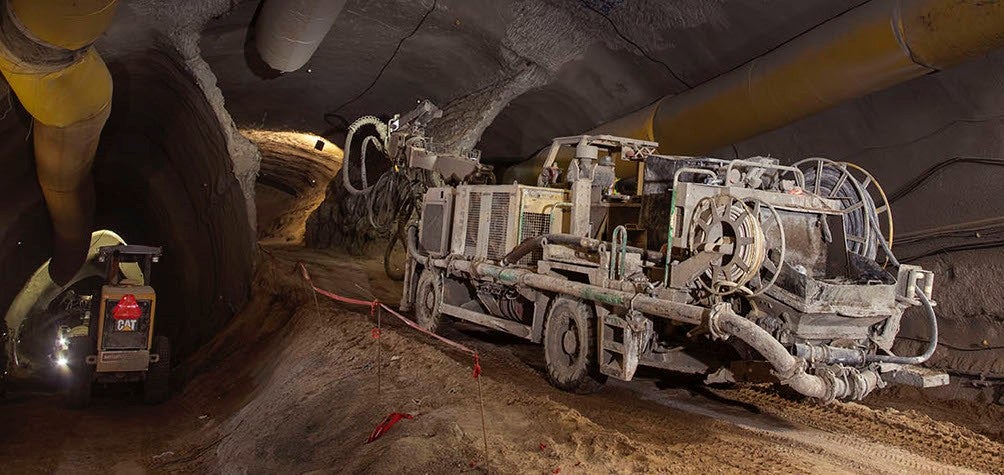It is generally recognised that odour control equipment is the second highest source of energy consumption on most waste water treatment plants, add to this the requirement for chemicals, water or expensive media replacement / disposal and odour abatement does not look as environmentally friendly as perhaps it is perceived.
The main energy demand of odour abatement systems arise from the extraction fans that are generally required to extract at 10-12 air change per hour (ACPH) from a building and then push it through a scrubbing media with a high resistance. The combination of high air volume and significant pressure drop through the media bed requires large fan motors with high energy consumption.
Given that fan law dictates that power absorbed varies as a cube of the fan speed [K2 /K1 = {N2 / N1} 3] reducing the fan speed by lowering the air change rate and reducing the pressure drop will drastically reduce the size of the fan motor and consequently power consumption. However simply reducing the air extraction rate from 10-12 ACPH will result in poor ventilation within the building and a build up of toxic gasses such as Hydrogen Sulphide (H2S) leading to a poor or even potentially dangerous working environment plus the additional long term damage caused through H2S inspired corrosion.
Several water companies and leading consulting engineers including United Utilities and MWH have recognised the high carbon footprint of traditional odour control technologies and have implemented alternative odour abatement designs incorporating Terminodour that significantly reduce energy consumption and overall carbon footprint.
Terminodour is a unique odour control system that uses a specially developed ionisation process which oxidises odour in situ. The system utilises fresh filtered air that is ionised and fed into the building or tank consequently the pressure drop is a fraction of that of comparable odour extraction technologies.
Because the negatively charged oxygen molecules (O-) requires contact time in order to oxidise the odours, high air change rates are neither desirable or beneficial and despite significantly lower ACPH rates internal air quality actually improves. The combined benefit of reduced air volumes and lower pressure drops ensures significantly lower power consumption.
Savings can also be seen on wet well / pumping station applications. Terminodour was installed on a combined storm overflow tank at Hoylake near Liverpool for United Utilities. The actual power consumption figures are detailed in the following table alongside an estimate of a traditional extraction system using a dry media such as activated carbon.
Due to long contact time to achieve effective oxidation Terminodour is not always suitable as the sole means of odour abatement. A typical example would be a building housing sludge centrifuges where H2S levels emanating from the centrifuges can be measured in hundreds of ppm. Traditionally the whole air volume of the building would have been extracted at a rate of 10-12 ACPH to an odour scrubbing system.
By extracting the high level odours but relatively small volume of air (typically 15-20 x the volume of the centrifuge) to a scrubbing system and utilising the Terminodour system to deal with the high air volumes but relatively low background odour significant energy savings can be made. At Fleetwood United Utilities used Terminodour in combination with a chemical scrubbing system to deal with odours from the sludge cake building, and according to MWH the size of the chemical scrubber was reduced by around 80%.
At Swansea Welsh Water installed a Terminodour system to supplement the performance of a tree-stage chemical scrubbing system with a power consumption of 300kW/hr. The Terminodour system has proved so successful that it is dealing with virtually the entire odour whilst operating at only 20% of the power requirement of the chemical scrubber.
CSO Technik can design and supply the full combination system of Terminodour and the scrubbing system which provides a clear benefit to the client of having only one supplier/contractor responsible for the integrity of the entire odour abatement system.
CSO can and have supplied a wide range of scrubbing technologies from simple passive activated carbon to complex wet chemical scrubbing systems. CSO’s Kombi- Skrub is a dry chemical scrubber which is an ideal partner for Terminodour although it can also be used as a stand alone odour abatement system. Kombi-Skrub has a very high odour removal capacity making it ideal for low volume high odour content applications from dewatering equipment for example, or any odour source which can contaminate the general atmosphere in housings or buildings.
The relatively small size and low resistance of the system allows for low energy, high efficiency, small extraction fans to be used. With the heavy potential contamination reduced by Kombi-Skrub, the fugitive odours in the general atmosphere are removed by Terminodour and together they combine to provide an unparalleled low energy consumption total solution.










